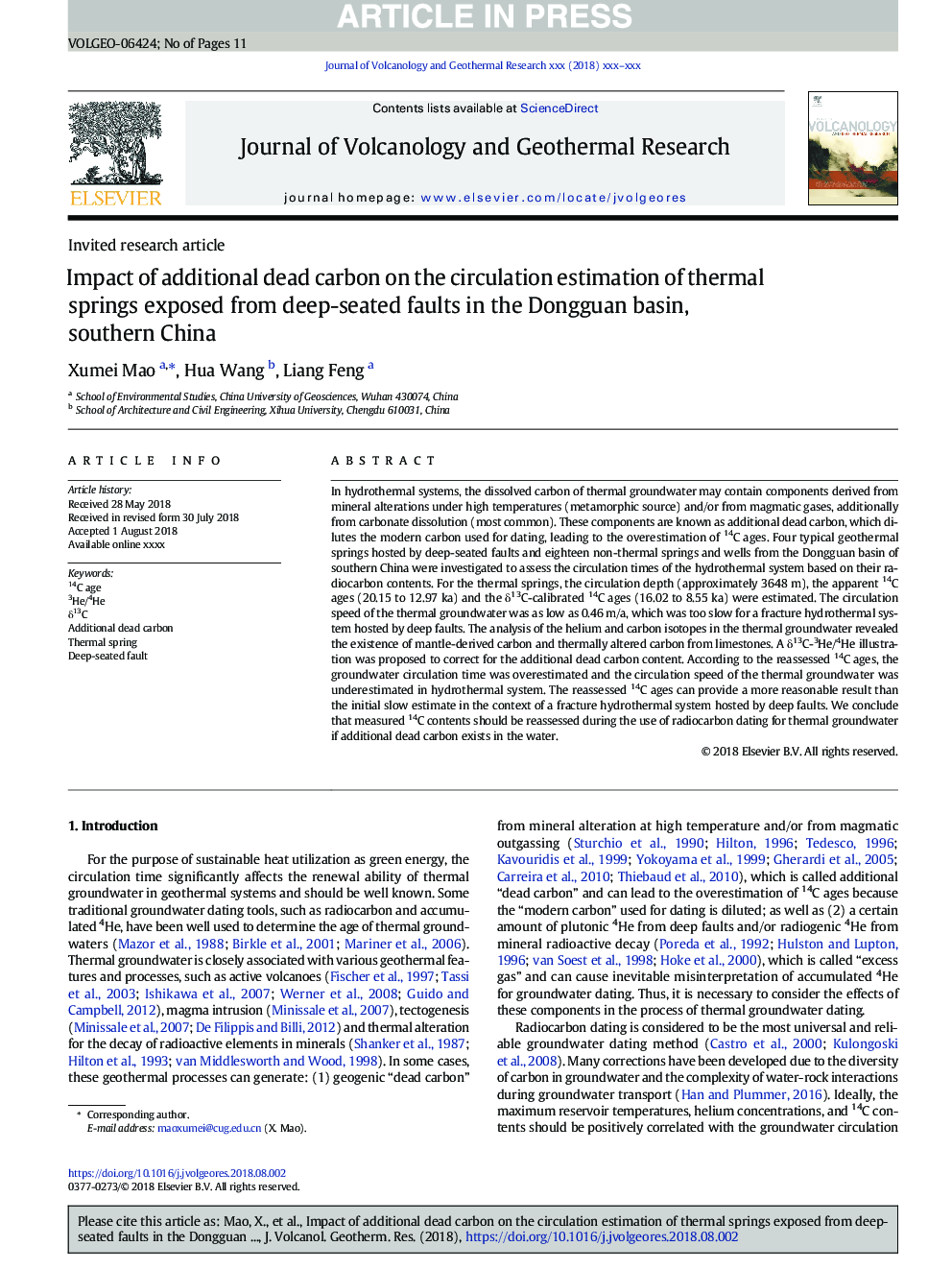| Article ID | Journal | Published Year | Pages | File Type |
|---|---|---|---|---|
| 8959596 | Journal of Volcanology and Geothermal Research | 2018 | 11 Pages |
Abstract
In hydrothermal systems, the dissolved carbon of thermal groundwater may contain components derived from mineral alterations under high temperatures (metamorphic source) and/or from magmatic gases, additionally from carbonate dissolution (most common). These components are known as additional dead carbon, which dilutes the modern carbon used for dating, leading to the overestimation of 14C ages. Four typical geothermal springs hosted by deep-seated faults and eighteen non-thermal springs and wells from the Dongguan basin of southern China were investigated to assess the circulation times of the hydrothermal system based on their radiocarbon contents. For the thermal springs, the circulation depth (approximately 3648â¯m), the apparent 14C ages (20.15 to 12.97â¯ka) and the δ13C-calibrated 14C ages (16.02 to 8.55â¯ka) were estimated. The circulation speed of the thermal groundwater was as low as 0.46â¯m/a, which was too slow for a fracture hydrothermal system hosted by deep faults. The analysis of the helium and carbon isotopes in the thermal groundwater revealed the existence of mantle-derived carbon and thermally altered carbon from limestones. A δ13C-3He/4He illustration was proposed to correct for the additional dead carbon content. According to the reassessed 14C ages, the groundwater circulation time was overestimated and the circulation speed of the thermal groundwater was underestimated in hydrothermal system. The reassessed 14C ages can provide a more reasonable result than the initial slow estimate in the context of a fracture hydrothermal system hosted by deep faults. We conclude that measured 14C contents should be reassessed during the use of radiocarbon dating for thermal groundwater if additional dead carbon exists in the water.
Keywords
Related Topics
Physical Sciences and Engineering
Earth and Planetary Sciences
Geochemistry and Petrology
Authors
Xumei Mao, Hua Wang, Liang Feng,
